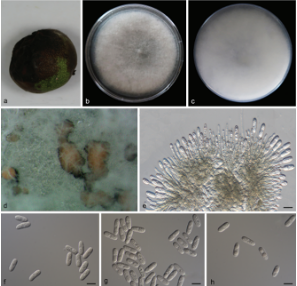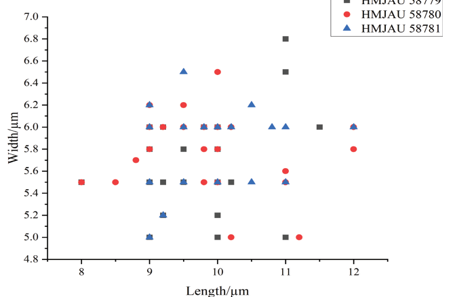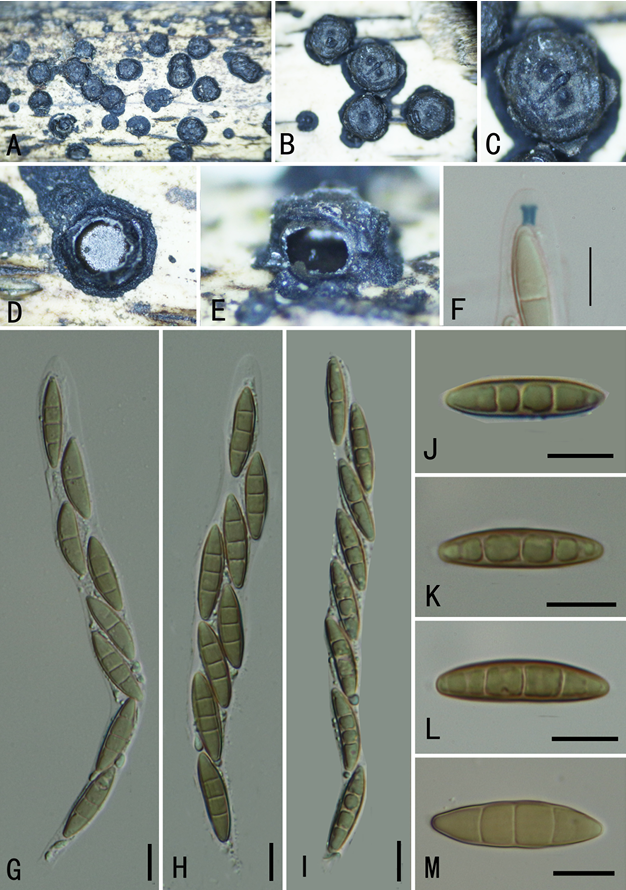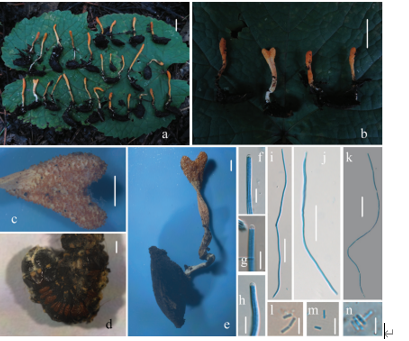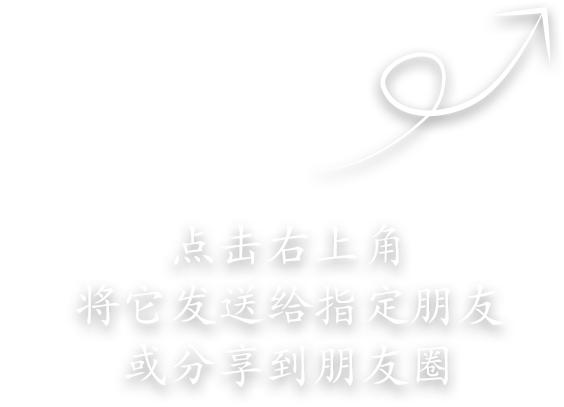Cladophialophora nyingchiensis W. Sun, L. Su, M.C. Xiang and X.Z. Liu, sp. nov. 2020
MycoBank MB 824204
Holotype: China: Tibet: Nyingchi, Qinghai-Tibet Plateau, 29◦450 N, 94◦450 E, 3448 m a.s.l. from rock, 2 August 2013, Meichun Xiang, (HMAS245367 (dried culture)–holotype and CGMCC
3.17330–ex-type culture).
Morphological description
Mycelium merged into the agar. No diffusible pigment produced. Yeast cells absent. Hyphae smooth and thin-walled, septate, hyaline to pale olivaceous, guttulate, 1.0–2.5-µm-wide.Conidiophores lateral or terminal, pale olivaceous, smooth and thin-walled, ellipsoidal, sub-cylindrical, 8.7–11.2 × 1.3–3.2 µm, erect (Figure 17C–E). Conidia 0-1-septate, formed in long, occasionally branched chains, subhyaline to pale olivaceous, guttulate, cylindrical to fusiform, truncate at the base, 6.5–22.1 × 1.3–3.2 µm (x = 13.8 × 2.5 µm, n = 20) (Figure 17F–L).Culture characters: Colony on MEA growing slowly, attaining 21-mm-diam. after four weeks at 25 ◦C. Colony surface arising centrally, velvety with short pale drab-gray to smoke gray aerial hyphae, dry, lobate margin; reverse benzo brown (Figure 17A,B). Minimum 4 ◦C, optimum at 20–25 ◦C, and maximum 29 ◦C.
Habitat: from rock
Distribution: China
GenBank Accession:
Notes: The new species is phylogenically closed to C. parmeliae and C. pseudocarrionii (Figure 4). However, conidia of the new species are smaller and slender than that of those two species, while the conidia of C. pseudocarrionii are ellipsoid to fusiform; 5.5–9.5 × 2–4.5 µm compared to those of C. parmeliae are subspherical to ellipsoidal, 0 (-1)-septate, 7–13 × 4–6 µm [67,68].
Reference: Wei Sun , Lei Su , Shun Yang et al.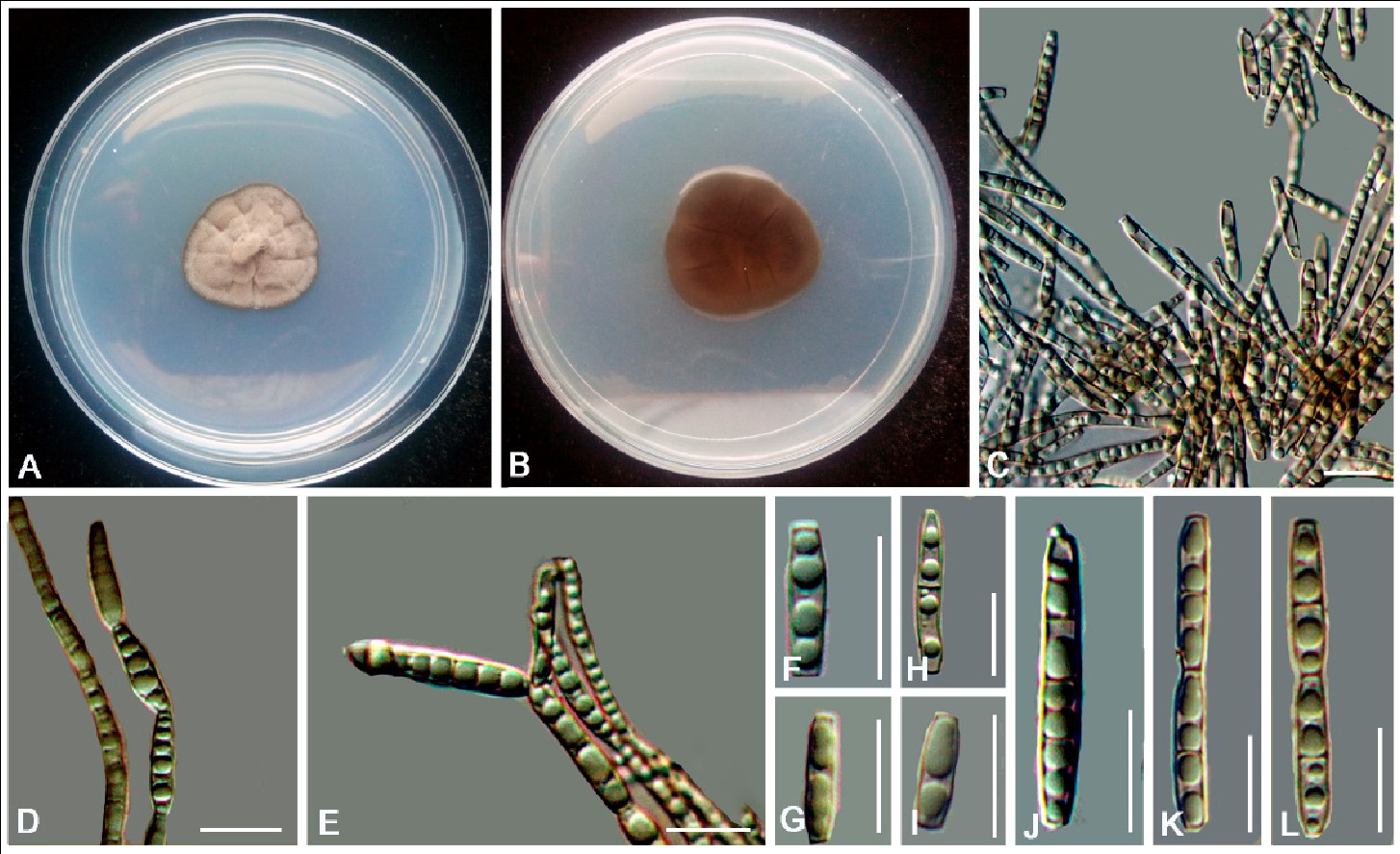
Cladophialophora nyingchiensis (CGMCC 3.17330). (A,B) Forward and reverse of colony on MEA. (C–E) Conidial chains. (F–L) Conidia. Scale bars: (C–L) = 10 µm.


